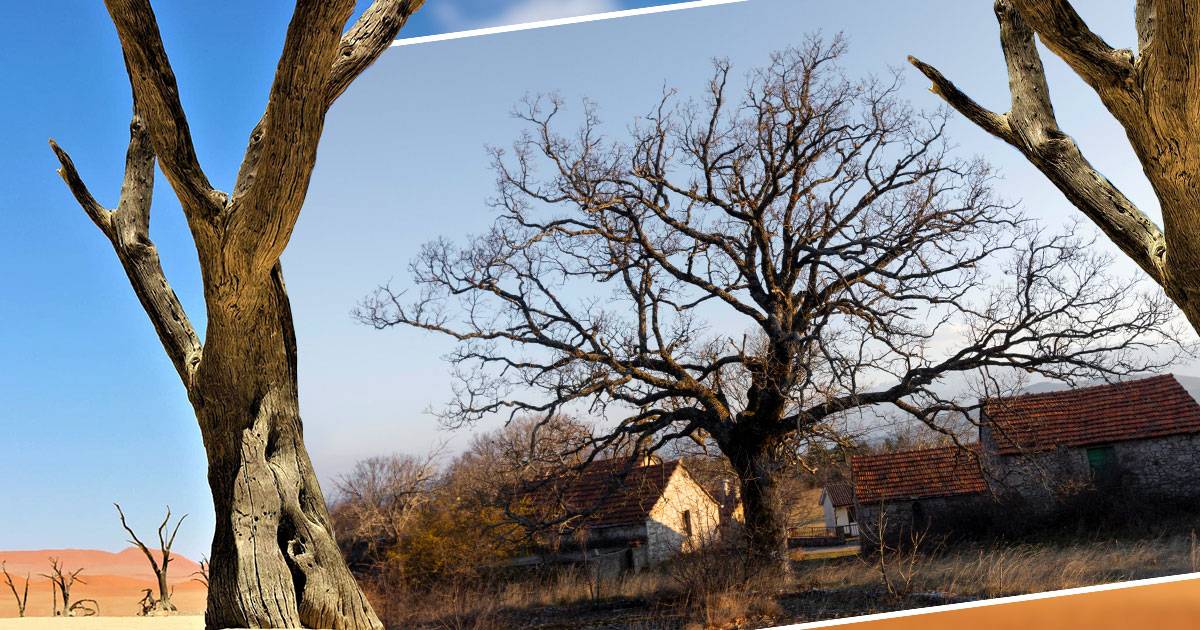Is Your Tree Saying Goodbye? 15 Ways on How to Tell if It’s Dead

If you have trees around, keeping an eye on their health is important. Trees are beautiful and can increase the value of your home, but they can also be dangerous if they die or get sick. You can take steps to keep your property healthy and safe if you know how to tell if a tree is dead.
1. Leafless branches
One of the fastest ways to tell if a tree is dead is if it has no leaves on its branches. A dead tree won’t grow leaves during its normal season. If you see other trees budding, but one stays bare, it might be dead or dying. When leaves don’t appear as expected, especially after winter, it’s a sign that the tree may not be alive.
2. Brittle bark
To know if a tree is dead, its dry and brittle bark easily cracks and falls off. You might notice large pieces of bark on the ground around the tree. This happens because the tree isn’t moving water and food through its body.
3. Fungus growth
If you see mushrooms or other fungi growing at the tree’s base or on its trunk, it could be a sign of internal decay. Fungi feed on dead or decaying matter, so their presence suggests the tree is dying or already dead. Look out for any unusual growths, especially if they appear after a rainy period.
4. Lack of buds
In spring, most trees develop buds that later become leaves or flowers. If a tree doesn’t produce buds, the tree can be considered dead. Take note of other trees of the same type in your area—if they’re budding but yours isn’t, it’s a concerning sign.
5. Hollow trunk
A hollow or decaying trunk is a strong indicator of a dead tree. Tap on the trunk—if it sounds hollow, it likely means the inside is dead or dying. A tree with a hollow root may be unsafe because it weakens its structure.
6. No response to pruning
Pruning is a way to encourage new growth, but a dead tree won’t respond. If you prune a branch and it doesn’t produce new growth, the tree is dead. Look for buds or sprouts to know if something is growing in the pruned regions.
7. Leaning
While some trees naturally lean, a sudden or severe lean can indicate root failure and a dying tree. Look out for changes in the tree’s angle—sudden leans can indicate instability, potential falling, or the tree dying or dead.
8. Cracks in the trunk
Large, deep cracks can indicate internal decay and structural weakness. If you notice any significant cracks, especially ones widening or deepening, the tree may be dead or dying. Cracks can also be entry points for pests and diseases.
9. Woodpecker activity
Woodpeckers feed on insects that live under the bark of dead or dying trees. Increased woodpecker activity, such as holes in the trunk, indicates that the tree is dead. Keep an eye out for any unusual woodpecker behavior around your trees.
10. No signs of life
One of the fastest ways to tell if a tree is dead is if it won’t show signs of life, such as green leaves, buds, or new growth. All year, pay close attention to the tree to see if it shows any signs of life. A lack of these signs could mean the tree is dead or dying.
11. Root damage
If the tree’s roots are damaged or decayed, it may be unable to absorb water and nutrients, and the tree is also considered dead. Look for open roots, root rot, or bending that happens when roots fail as signs of root damage. Construction activities close to the tree or soil compaction can cause root damage.
12. Dry, brittle twigs
Dead trees often have dry, brittle twigs that snap easily when bent. If you notice that the twigs on your tree are dry and brittle, compared to other trees nearby, it could be a sign that the tree is dead or dying. Check the twigs regularly for signs of life, such as buds or new growth.
13. Soil condition
Conditions in the soil around dead or dying trees may be too compacted, missing nutrients, or too dry. How the soil is structured can affect a tree’s capacity to take in water and nutrients, which can cause it to die. Look for signs of compaction or nutrient deficiency in the earth around the tree’s base.
14. Lack of response to environmental stimuli
There is no change in the surroundings for dead trees, like when the light or temperature changes. If you notice that a tree is not responding to environmental changes, it could be a sign that the tree is dead or dying. Watch for changes in the tree’s behavior, such as sudden leaf drops or wilting, which could indicate a problem.
15. Presence of pests
Bark bugs and other pests are drawn to dying or dead trees. A tree with bugs might be dead or dying if you see them. Check the tree for signs of pests, like holes in the bark or something that looks like sawdust at the base.
Regularly inspecting your trees for these signs of decline can help you identify and address any issues before they become serious. If you suspect a tree on your property is dead or dying, it’s best to consult a certified arborist, who can assess the tree’s health and recommend the best course of action. Proper care and maintenance can help keep your trees healthy and beautiful for years.
